| View previous topic :: View next topic |
| Author |
Message |
weaver
Joined: 26 Oct 2011
Posts: 9
Location: California


|
 Posted: Dec 11, 2011 14:52 Post subject: Re: Inclusions of spiral or helical growth and screw dislocations - (0) Posted: Dec 11, 2011 14:52 Post subject: Re: Inclusions of spiral or helical growth and screw dislocations - (0) |
|
|
Awesome sample pics.
My only contribution is to the thinking realm of things, I have no spiral inclusions in any of my specimens.
"Is it possible that these spirals appear the same way they do in other parts of nature?"
When I think of "Why some inclusions are spiral?" as opposed to straight, cloudy, et al.
I started thinking- "Is there anything else in nature that is anomalously spiral-shaped?"
The only things I could think of are fireworks, atom-smashing test results, and hurricanes. Yes, there are other spiral/helical shapes in nature that form, but they are harder to analyze their initial growth pattern; eg. DNA. Perhaps looking at how other spirals are formed can lend us clues to this mystery?
~
In fireworks, usually the gunpowder charge is set so the missile fires STRAIGHT into the air. But occasionally, a firework is built poorly, or has some other packing/packaging flaw, and the firework spirals on it's ascent. Usually, this spiraling continues on this spiral path until interrupted (no more propellant, or the firework discharges it's main cache.)
In atom-smashing, we see that [quarks, anti-quarks, gluons] sometimes travel straight, but often times create spiral patterns. I think this happens if they bounce off of something. I do not know more about this.
In hurricanes and galaxies: We see spiral shapes that are born from fluid dynamics, or other similar chaotic phenomena. These spirals dissipate over time based on external influences, gravity, loss of momentum, etc.
~
The fireworks and hurricane/galaxy examples show spirals in an open environment. Meaning: External forces can affect the outcome. Whereas, in a crystalline environment, fewer external forces come into play- so the inclusion is "stuck" repeating it's spiral shape. The mineral is practically a closed system (provided that IT has the stability to form over time), so there would be less to "knock it off course" of it's spiral growth. Perhaps at the time of the inclusion's INITIAL formation, some conditions were correct for the spiraling to begin?
Flights of fancy can be fun, until they take a spiral-shaped nose dive!
Thanks again for the pics, and the words!
|
|
| Back to top |
|
 |
John S. White
Site Admin

Joined: 04 Sep 2006
Posts: 1298
Location: Stewartstown, Pennsylvania, USA



|
 Posted: Dec 11, 2011 17:08 Post subject: Re: Inclusions of spiral or helical growth and screw dislocations - (0) Posted: Dec 11, 2011 17:08 Post subject: Re: Inclusions of spiral or helical growth and screw dislocations - (0) |
|
|
With respect to spirals in nature don't forget narwhal tusks and some goat horns. Of course many sea animal shells are spiralled as well.
_________________
John S. White
aka Rondinaire |
|
| Back to top |
|
 |
cascaillou
Joined: 27 Nov 2011
Posts: 263


|
 Posted: Dec 12, 2011 08:57 Post subject: Re: Inclusions of spiral or helical growth and screw dislocations - (0) Posted: Dec 12, 2011 08:57 Post subject: Re: Inclusions of spiral or helical growth and screw dislocations - (0) |
|
|
| Let's note that such srew dislocation figures have also been seen in emerald and in topaz
|
|
| Back to top |
|
 |
Duncan Miller

Joined: 25 Apr 2009
Posts: 138
Location: South Africa



|
 Posted: Mar 30, 2013 03:47 Post subject: Re: Inclusions of spiral or helical growth and screw dislocations - (0) Posted: Mar 30, 2013 03:47 Post subject: Re: Inclusions of spiral or helical growth and screw dislocations - (0) |
|
|
Some time ago Elise Skalwold kindly sent me some references to helical crack growth and also the programme of the 2011 Rochester Symposium. Now I have had the time to give some more thought to the helical growth features described and illustrated in this thread. I am going to take the liberty of reproducing below the abstract of John Rakovan and John White's contribution to the Rochester Symposium, because I think it neatly summarises what is known about these helical cracks and proposes a feasible mechanism for their formation.
I also will attach a photograph of a helical dislocation, on a microscopic scale (copied from Hull & Bacon 1984:65). Perhaps with time, in a hot crystal, such a dislocation may expand, like a slowly unwinding spring, to macroscopic size. The resulting strained volume around the dislocation would be vulnerable to preferential etching, as proposed by Rakovan & White, to produce a hollow helix like that described at the top of this thread by Elise.
The regularly spaced, slightly twisted blade-like cracks emanating from the turns of the helix in both John White's and my beryl specimens have been puzzling me, because they don't appear to be open etch features. Perhaps the answer lies in the fact that beryl has strongly anisotropic thermal expansion. When heated from 0- 800*C, it expands linearly in the a-axis direction, but the c-axis contracts in the range 0-300*C and thereafter expands (McColm1983:14). The reverse would the true on cooling from 800*C, as happens to a natural crystal after formation, so below 300*C the crystal would expand in the c-axis direction. This would add strain to any pre-existing helically strained region in the crystal, which could be relieved by regularly spaced cracking emanating from the helical core.
Topaz and spodumene also have markedly anisotropic co-efficients of thermal expansion, which may account for any laterals cracks associated with helical cracks in these materials. What remains puzzling to me is that although helical dislocations have been reported in a wide variety of materials of differing crystallography, as far as I know macroscopic examples have been reported only in beryl, spodumene and topaz. What is also puzzling is that they appear only parallel to the c-axes of these minerals, which don't even share the same crystal system.
I think that these helical growth/etch features, and the macroscopic growth hillocks seen on many crystal faces (see Rakovan 2004), really should not be called 'screw dislocations' even if one or more screw dislocations originally played some part in their formation. Helical dislocations are not pure screw dislocations, and most dislocations have a mixed edge/screw characteristic, occur in high density and on a microscopic scale.
References:
Hull, D. & Bacon, D.J. 1984. Introduction to dislocations. Oxford: Pergamon Press.
McColm, I.J. 1983. Ceramic science. Glasgow: Leonard Hill.
Rakovan, J. 2004. Growth hillock. Rocks & Minerals 79:415-417.
---------------------------------------------------------------------------------------------------
38th Rochester Mineralogical Symposium 14-17 April 2011 UNUSUAL SPIRAL INCLUSIONS IN CRYSTALS. J. Rakovan1 and J. S. White2. 1Department of Geology Miami University, Oxford, OH 45056; 2Kustos, P.O. Box 332 Stewartstown, PA 17363.
Numerous crystals have been observed by the authors that exhibit interesting spiral inclusions; some quite spectacular. These include beryl, topaz, and spodumene. Many of these inclusions are visible without magnification, with lengths up to many centimeters and widths in millimeters. In certain cases, most common in emerald, the morphology is that of a double helix (Vuillet and Rotlewicz 2001). Some authors have referred to these as screw dislocations, however, the lateral dimensions and morphology of these inclusions is atypical for screw dislocations. Although dislocations can have lengths on the order of centimeters their lateral dimensions are usually in the Angstrom or nanometer range. Thus, optical detection is usually not possible. Furthermore, most screw dislocations are straight features. Although they are commonly observed to change orientation along their length, generally due to movement (creep) as a result of strain, screw dislocations do not generally form a helical morphology. There are, however optically observable manifestations of screw dislocations in crystals. The microtopography on crystal faces may exhibit growth spirals and hillocks that are the result of a growth mechanism associated with screw dislocations. Another example is the preferential etching along dislocations. Etch pits and the less common etch channels can be macroscopic signs of dislocations (Authier and Zarka 1977). The lateral dimensions of these features can be many orders magnitude larger than the associated dislocations, thus making them optically visible. Although less common, dislocations with a helical morphology have been observed, and an extensive physics and materials science literature about these exists. Observations of helical dislocations minerals, including fluorite, cuprite, olivine, garnet and sapphire, have been published (Amelinckx et al. 1957; Caslavsky, and Gazzara 1971; Veblen and Post 1983). The mechanisms of their formation are debated, however, most authors propose that helical dislocations form from movement, climb and glide, of previously straight screw dislocations due to thermal or compositional stresses (Weertman 1957). Microscopic observations of spiral inclusions in several samples (Fig. 1 and 2A) indicate that these are hollow and may be partially filled with some other solid phase. In the case of the hollow spiral in the topaz pictured in Fig. 2A there is a very fine and detailed microtopography on its inner surface. Precise 30 repetition is observed not only in the helical repeat but also in the microtopography on adjacent segments of the spiral. Although speculative, the authors propose that the observed, macroscopic spirals are the result of natural post growth etching or decoration, coeval with growth, of helical dislocations and the strained region of the crystal structure around them. If the dislocation offset (Burgers vector) and associated strain is large then etching may occur only along the defect with little affect to the rest of the crystal.
References:
Amelinckx, S., Bontinck, W., Dekeyser, W., and Seitz, F. 1957. On the formation and properties of helical dislocations. Philosophical Magazine, 8th Series, 2, 355-378.
Authier, A. and Zarka, A. 1977. Observation of growth defects in spodumene crystals by X-ray topography. Physics and Chemistry of Minerals, 1:15-26.
Caslavsky, J. L., and Gazzara, C. P. 1971. The observation of helical dislocations in sapphire. Journal of Materials Science, 6:1139-1141.
Veblen, D. R. and Post, J. E. 1983. A TEM study of fibrous cuprite (chalcotrichite): microstructures and growth mechanisms. American Mineralogist, 68:790-803.
Vuillet, p., and Rotlewicz, J. 2001. Les Inclusions en Double Hélice dans les Émeraudes de Colombie [Double helix inclusions in Colombian emeralds]. Revue de Gemmologie AFG, 143:15-19.
Weertman, J. 1957. Helical Dislocations. Physical Review, 107: 1259-1261.
| Description: |
|
| Viewed: |
297033 Time(s) |
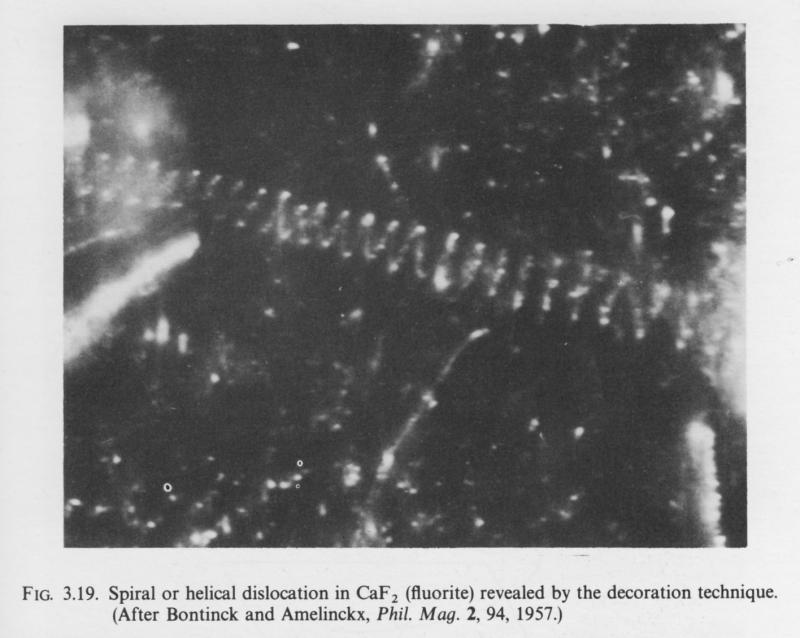
|
|
|
| Back to top |
|
 |
Jordi Fabre
Overall coordinator of the Forum

Joined: 07 Aug 2006
Posts: 5112
Location: Barcelona



|
 Posted: Mar 30, 2013 16:18 Post subject: A new featured section in FMF Posted: Mar 30, 2013 16:18 Post subject: A new featured section in FMF |
|
|
Just to make known to everyone that as we did some time ago in the Spanish side, we will create here a new section named: "Featured columns of FMF" (if someone has a better name, please let me know via PM) where we will save the articles that in the opinion of the FMF's administrators deserves a special space with a different organization than the rest of the Forum, a kind of organization a little bit similar to a magazine's style. The topic "Inclusions of spiral or helical growth and screw dislocations" will be the number 0 of this new section considering its quality and interest. Of course several other topics will be in the new section "Featured columns of FMF" but after reading the last post of this thread I could not resist the temptation to announce now, here, the establishment of that new section.
Thank you to all participants in this thread. Great job!
|
|
| Back to top |
|
 |
Elise

Joined: 22 Dec 2009
Posts: 243
Location: New York State



|
 Posted: Mar 31, 2013 08:57 Post subject: Re: Inclusions of spiral or helical growth and screw dislocations - (0) Posted: Mar 31, 2013 08:57 Post subject: Re: Inclusions of spiral or helical growth and screw dislocations - (0) |
|
|
Hi Duncan!
Great fun that you picked this thread back up! The Rochester Mineralogical Symposium is coming up very soon - helical fans John White and John Rakovan will both be there and Bill will be nearby -- it would be a wonderful time to sit and brainstorm this fascinating formation. There is still time to book a flight ;-) or we can put you on SKYPE! Speaking of which, getting on a plane now headed for the Sinkankas Symposium...We'll have fun discussing this thread on the trip and we will get back with any " high altitude, bright ideas", if any occur!
Cheers!
Elise
| xenolithos wrote: | I think that these helical growth/etch features, and the macroscopic growth hillocks seen on many crystal faces (see Rakovan 2004), really should not be called 'screw dislocations' even if one or more screw dislocations originally played some part in their formation. Helical dislocations are not pure screw dislocations, and most dislocations have a mixed edge/screw characteristic, occur in high density and on a microscopic scale.
|
_________________
Elise Skalwold |
|
| Back to top |
|
 |
mjbainbridge
Joined: 15 Dec 2011
Posts: 2
Location: Ontario


|
 Posted: Mar 20, 2014 21:50 Post subject: Re: Inclusions of spiral or helical growth and screw dislocations - (0) Posted: Mar 20, 2014 21:50 Post subject: Re: Inclusions of spiral or helical growth and screw dislocations - (0) |
|
|
Hi Everyone,
Elise brought this fascinating thread to my attention after I posted this photo of a screw-dislocated natrolite on Facebook. I must admit, most of this discussion is way over my head, but I'm happy to be able to contribute, and looking forward to learning more about it!
BTW, I showed this to John Rakovan in Tucson when I got it, and he's interested in studying it, so I'll post any new information that comes out of it.
Michael
| Description: |
natrolite
Mount Saint Hilaire, Quebec, Canada
2.7cm high |
|
| Viewed: |
244911 Time(s) |
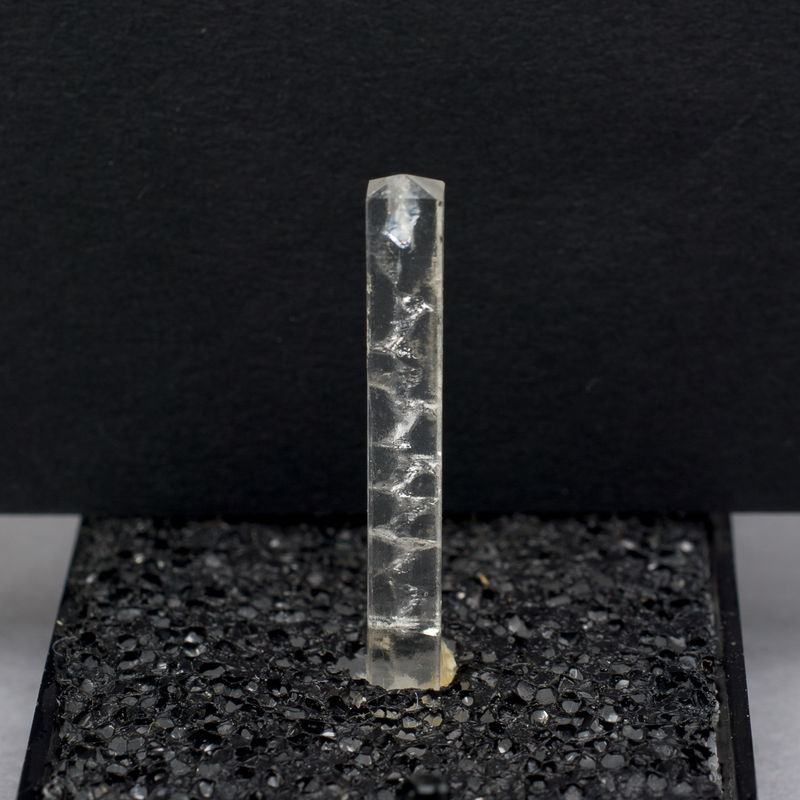
|
|
|
| Back to top |
|
 |
Duncan Miller

Joined: 25 Apr 2009
Posts: 138
Location: South Africa



|
 Posted: Mar 21, 2014 00:36 Post subject: Re: Inclusions of spiral or helical growth and screw dislocations - (0) Posted: Mar 21, 2014 00:36 Post subject: Re: Inclusions of spiral or helical growth and screw dislocations - (0) |
|
|
When I listed the minerals in which these helical growth features\screw dislocations (?) had been observed, I forgot to mention natrolite. Thank you for reminding me. I have seen several in natrolite specimens from a quarry near Hardap Dam, Mariental, Namibia.
Duncan
|
|
| Back to top |
|
 |
marco campos-venuti

Joined: 09 Apr 2014
Posts: 240
Location: Sevilla



|
 Posted: Jun 10, 2014 06:29 Post subject: Re: Inclusions of spiral or helical growth and screw dislocations - (0) Posted: Jun 10, 2014 06:29 Post subject: Re: Inclusions of spiral or helical growth and screw dislocations - (0) |
|
|
Another example in tourmaline from Madagascar
| Description: |
Tourmaline
Ibity, Madagascar
2 cm |
|
| Viewed: |
244609 Time(s) |
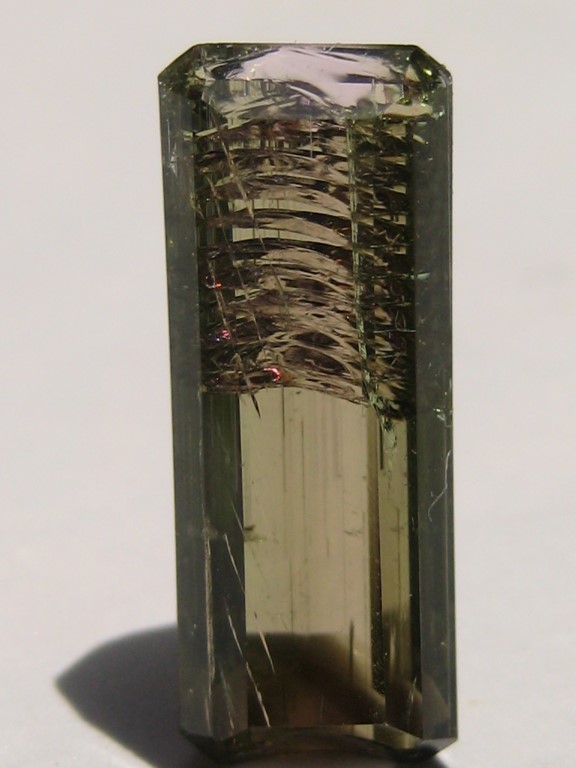
|
|
|
| Back to top |
|
 |
marco campos-venuti

Joined: 09 Apr 2014
Posts: 240
Location: Sevilla



|
 Posted: Jul 16, 2014 05:09 Post subject: Re: Inclusions of spiral or helical growth and screw dislocations - (0) Posted: Jul 16, 2014 05:09 Post subject: Re: Inclusions of spiral or helical growth and screw dislocations - (0) |
|
|
I would like to restart this interesting topic.
We use the term spiral dislocation because we have in mind the screw dislocation studied in crystal growth. We realize, speaking in this thread, that the scale is so different that we are probably in front of a different thing. We can then call it just fractures.
First we better we try to analyze these spiral structures. We have 2 different structures presented in the pictures in this thread.
1- a spiral fracture aligned along the long axis of the crystal (as in the Aquamarine of François Lietard )
2- many “en echelon” fractures (as in the John Koivula photo)
I found spirals in chalcedony and in opals. I have interpreted them as conchoidal fractures formed by contraction stress during loss of water in the free surface of small opal ponds. (see picture of chalcedony)
I reproduced this at home using egg white (see picture) that is a similar gel material.
What is the relation of these spirals in amorphous material with spirals in crystals, I don't know. Maybe there is no relation.
But the second style of fractures looks to me like a more clear stress pattern, due to geological deformation or simply to the contact of two different materials. As is the case of this picture of a quartz with lithyophilite inclusions. I'm not sure about the inclusions, they could be a mica. In this case the stress is confined at the boundary between quartz and the edge of the lithyophilite crystal. It is not rare that the inclusion crystals induce fractures in the included crystal. In this case the fractures are “en echelon”, maybe because the inclusion is flat.
I can't bring any conclusions, but I hope someone help me to reopen this topic,
marco
| Description: |
quartz with lithyophilite inclusion
Brazil
26.2 cts |
|
| Viewed: |
244281 Time(s) |
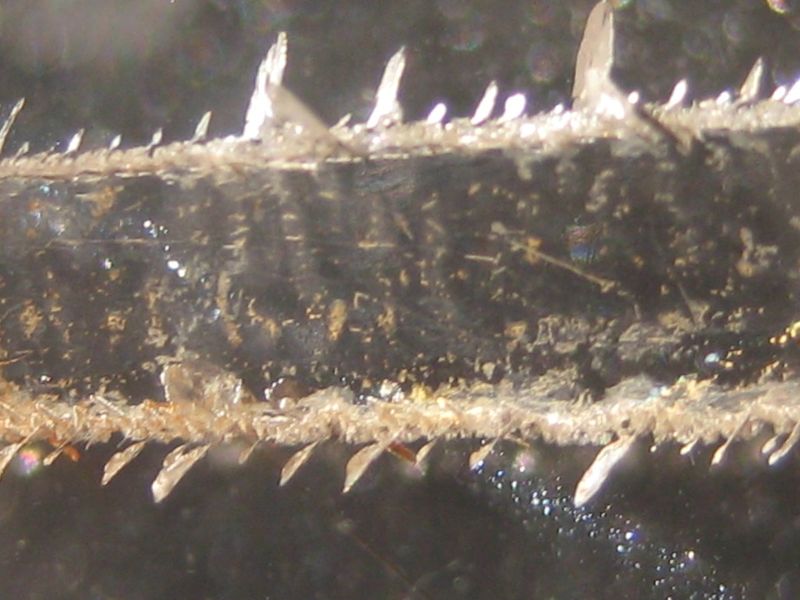
|
| Description: |
quartz with lithyophilite inclusion
Brazil
26.2 cts |
|
| Viewed: |
244249 Time(s) |
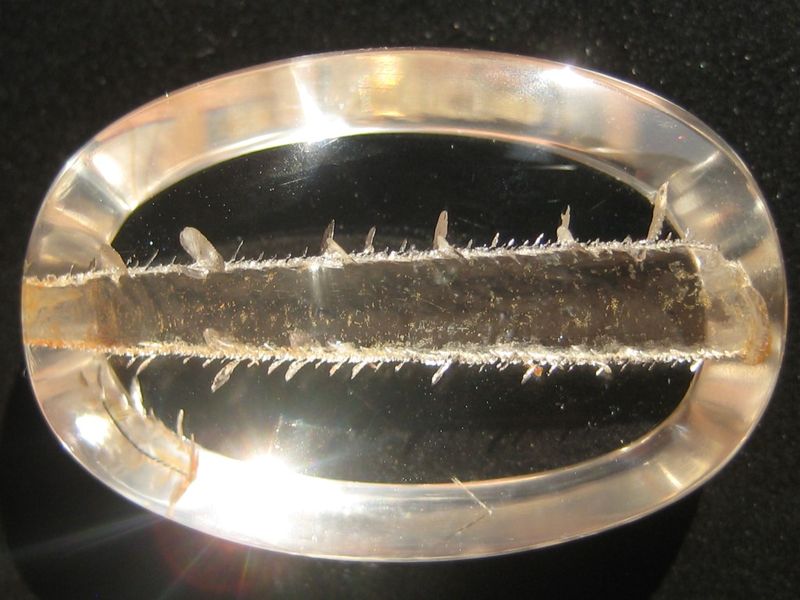
|
| Description: |
Dryed eggs white
at home
field is 5 cm
The pattern is the same as in the chalcedony |
|
| Viewed: |
244189 Time(s) |
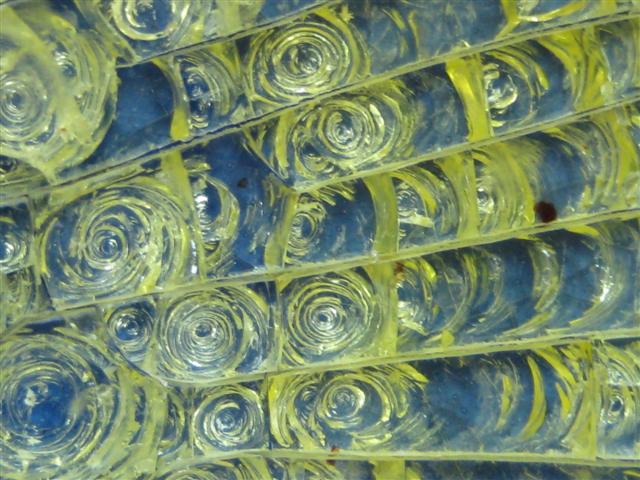
|
| Description: |
Chalcedony
Milos, Greece
field is 4 cm
The specimen shows many spirals on the same horizontal surface |
|
| Viewed: |
244221 Time(s) |
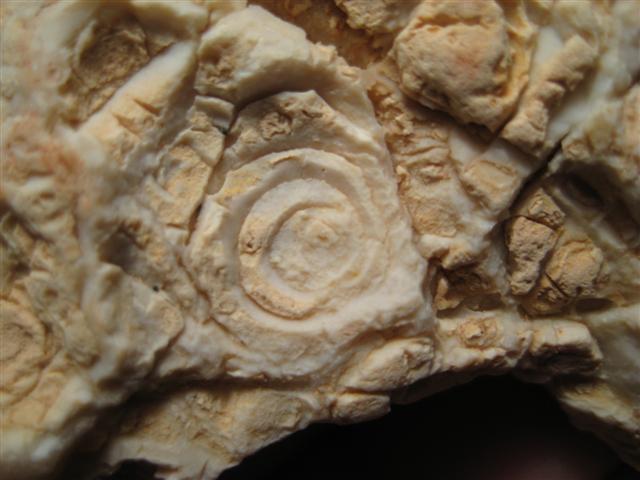
|
|
|
| Back to top |
|
 |
Elise

Joined: 22 Dec 2009
Posts: 243
Location: New York State



|
 Posted: Nov 21, 2014 12:56 Post subject: Re: Inclusions of spiral or helical growth and screw dislocations - (0) Posted: Nov 21, 2014 12:56 Post subject: Re: Inclusions of spiral or helical growth and screw dislocations - (0) |
|
|
| marco campos-venuti wrote: | | I can't bring any conclusions, but I hope someone help me to reopen this topic |
Hi Marco!
thank you so much for jump-starting this thread again,even if I am late finding your additions! The chalcedony spirals are fascinating!
Our discussion crosses many borders and has been going on for years now. We are all looking forward to John White & John Rakovan's published paper to shed some more light on it (presented at the Rochester Mineralogical Symposium a couple years ago).
I am lucky to have a wonderful specimen faceted by Duncan from the same beryl crystal as his own, pictured further back in the thread. I haven't taken a nice picture of it yet, but here it is anyway (scale from the folks holding it). It has been the focus of much discussion off-forum and a delight to have in my collection.
Best wishes,
Elise
| Mineral: | Beryl |
| Description: |
|
| Viewed: |
243733 Time(s) |
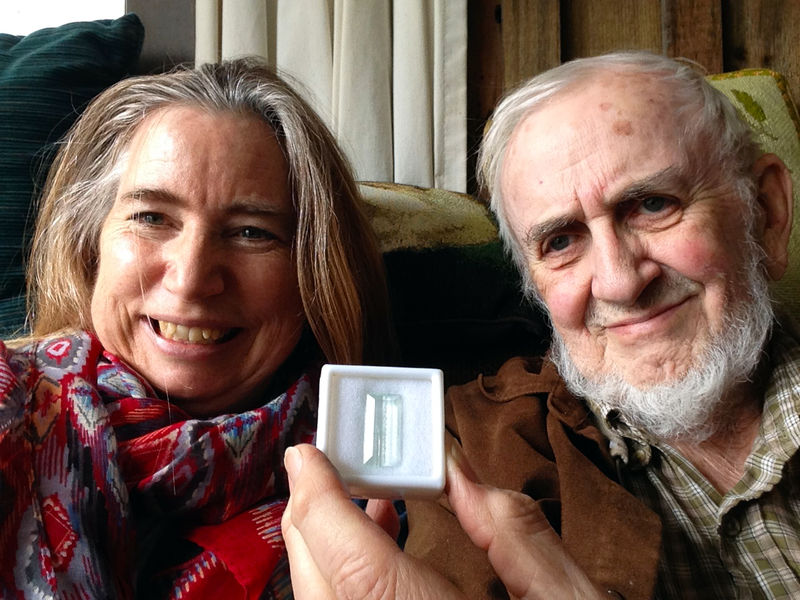
|
| Mineral: | Beryl |
| Description: |
|
| Viewed: |
243679 Time(s) |
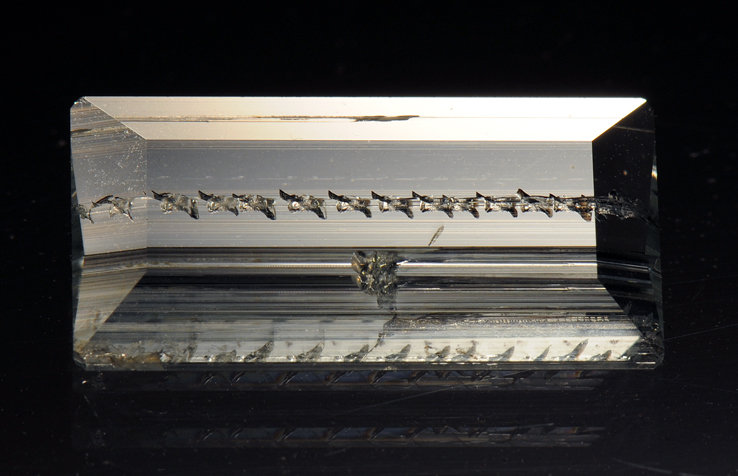
|
|
|
| Back to top |
|
 |
Conny Forsberg
Joined: 15 Nov 2014
Posts: 4
Location: Sweden


|
 Posted: Nov 21, 2014 14:52 Post subject: Re: Inclusions of spiral or helical growth and screw dislocations - (0) Posted: Nov 21, 2014 14:52 Post subject: Re: Inclusions of spiral or helical growth and screw dislocations - (0) |
|
|
| That is a really nice one Elise!
|
|
| Back to top |
|
 |
marco campos-venuti

Joined: 09 Apr 2014
Posts: 240
Location: Sevilla



|
 Posted: Nov 21, 2014 15:18 Post subject: Re: Inclusions of spiral or helical growth and screw dislocations - (0) Posted: Nov 21, 2014 15:18 Post subject: Re: Inclusions of spiral or helical growth and screw dislocations - (0) |
|
|
Wow Elise, that piece make me dream.
I remembered that I have an other spiral in a quartz, of a quite different kind, but of similarly obscure origin. It is a biterminated quartz crystal from the lodo quarry in Brazil that has a "lodo spiral" inside, visible from both sides.
A have an idea in mind, but I wait for your interpretation.
| Mineral: | Quartz |
| Locality: | | Brazil |  |
|
| Dimensions: | 65 mm |
| Description: |
|
| Viewed: |
243607 Time(s) |
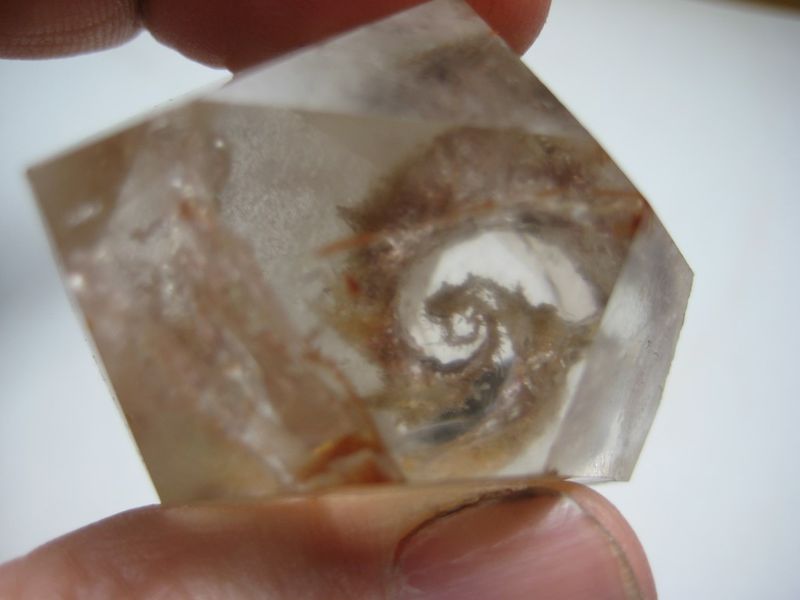
|
| Mineral: | Quartz |
| Locality: | | Brazil |  |
|
| Dimensions: | 65 mm |
| Description: |
|
| Viewed: |
243610 Time(s) |
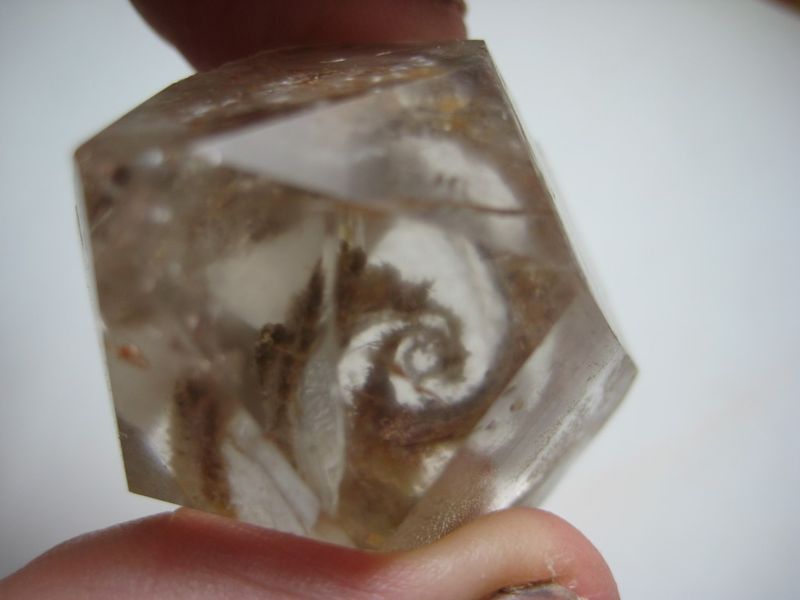
|
| Mineral: | Quartz |
| Locality: | | Brazil |  |
|
| Dimensions: | 65 mm |
| Description: |
|
| Viewed: |
243681 Time(s) |
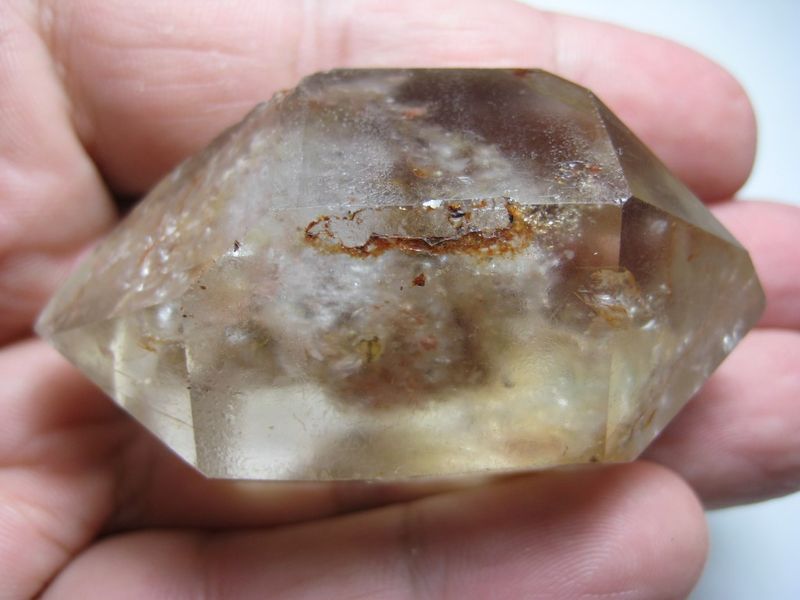
|
|
|
| Back to top |
|
 |
Elise

Joined: 22 Dec 2009
Posts: 243
Location: New York State



|
 Posted: Nov 22, 2014 08:33 Post subject: Re: Inclusions of spiral or helical growth and screw dislocations - (0) Posted: Nov 22, 2014 08:33 Post subject: Re: Inclusions of spiral or helical growth and screw dislocations - (0) |
|
|
Marco,
That quartz specimen is now second only to my other favorite on FMF, that of Vic Rzonca's find: https://www.mineral-forum.com/message-board/viewtopic.php?p=25510#25510
I have no idea what growth mechanism could cause such a structure to form and await your thoughts - what a special piece it is! Thank you so much for sharing this with us! I sent a link to Si & Ann Frazier, John Koivula, John White and other quartz enthusiasts friends, so they might enjoy the discussion as well.
Elise
_________________
Elise Skalwold |
|
| Back to top |
|
 |
Elise

Joined: 22 Dec 2009
Posts: 243
Location: New York State



|
 Posted: Dec 02, 2014 14:08 Post subject: Re: Inclusions of spiral or helical growth and screw dislocations - (0) Posted: Dec 02, 2014 14:08 Post subject: Re: Inclusions of spiral or helical growth and screw dislocations - (0) |
|
|
| marco campos-venuti wrote: | | I remembered that I have an other spiral in a quartz, of a quite different kind, but of similarly obscure origin. It is a biterminated quartz crystal from the lodo quarry in Brazil that has a "lodo spiral" inside, visible from both sides. |
Hi Marco,
I shared a link to this specimen with my quartz-loving friends and I've discussed it with several mineralogists - the most common comment is "WOW!". Talking with John Koivula yesterday on the phone, we wondered together what the exact orientation of the inclusion is. In the top photo, it appears that the view is through a rhombohedral face, but maybe a little angle off of the c-axis. Is the inclusion spiral around the c-axis, oriented parallel to it, or is unrelated to it?
I also wondered what it would look like from the side, does it also spiral up with the growth of the crystal or is it in a flat plane? what does it look like in 3D? There appear to be mineral inclusions in the spiral or at its interface with the quartz - if there are, are they remains of another inclusion that formed the spiral or triggered it? Is the spiral itself quartz and is it a separate crystal from the host quartz?
Waiting to hear your thoughts if you'll share them with us - It is such an intriguing specimen!
Best wishes,
Elise
_________________
Elise Skalwold |
|
| Back to top |
|
 |
|





